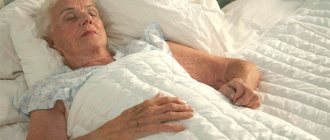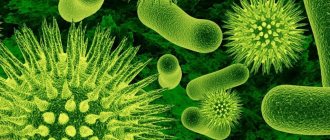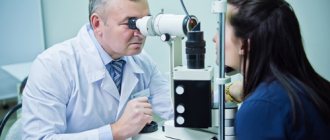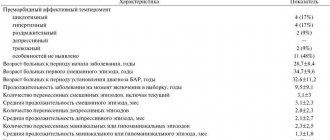The main feature is the repeated presentation of somatic symptoms simultaneously with persistent demands for medical examinations, despite repeated negative results and assurances from doctors that the symptoms are not of a somatic nature. If the patient has any physical illnesses, they do not explain the nature and severity of the patient's symptoms or suffering or complaints.
Excluded:
- dissociative disorders (F44.-)
- hair pulling (F98.4)
- childish form of speech [babble] (F80.0)
- lisp (F80.8)
- nail biting (F98.8)
- psychological and behavioral factors associated with disorders or diseases classified elsewhere (F54)
- sexual dysfunction not due to organic disorders or diseases (F52.-)
- thumb sucking (F98.8)
- tics (in childhood and adolescence) (F95.-)
- de la Tourette syndrome (F95.2)
- trichotillomania (F63.3)
Diagnosis F 45.0 Somatization disorder
The main features are numerous, repeated, frequently changing physical symptoms, occurring over a period of at least two years. Most patients have a long and complex history of contact with primary and secondary care services, during which many inconclusive tests and futile diagnostic manipulations may have been performed. Symptoms can relate to any part of the body or organ system. The course of the disorder is chronic and intermittent and is often associated with disturbances in social, interpersonal and family behavior. Short-term (less than two years) and less severe examples of symptoms should be classified as undifferentiated somatoform disorder (F45.1).
Briquet's disease
Multiple psychosomatic disorder
Excluded: simulation [conscious simulation] (Z76.5)
last modified: January 1999
Diagnosis F 45.2 Hypochondriacal disorder
The most important feature is the patient's persistent concern about the possibility of having a severe, progressive disease or several diseases. The patient presents persistent somatic complaints or shows persistent anxiety about their occurrence. Normal, ordinary sensations and signs are often perceived by the patient as abnormal and disturbing; he usually focuses his attention on only one or two organs or systems of the body. Significant depression and anxiety are often present, which may explain additional diagnoses.
A disorder characterized by preoccupation with one's own health
Dysmorphophobia (non-delusional)
Hypochondriacal neurosis
Hypochondria
Nosophobia
Excluded:
- delusional dysmorphophobia (F22.8)
- delusions focused on the functioning or appearance of one's own body (F22.-)
Revealing
It is about such complaints that the patient goes to the doctor, most often a therapist or neurologist. Experienced doctors usually identify somatoform disorder during consultation. Sometimes doctors need additional examinations that show the norm, which confirms the diagnosis.
Such a patient is referred to a psychotherapist or psychiatrist. Very often the patient denies the neuropsychic origin of his complaints and even resists attempts to discuss this cause. Therefore, the doctor (and the patient’s loved ones) should be patient in persuasion.
In practice, unfortunately, such patients will change several doctors, undergo many tests (all studies will show the norm) before they get to a specialist who can help them!
Diagnosis F 45.3 Somatoform dysfunction of the autonomic nervous system
The symptoms presented by the patient are similar to those that occur when an organ or organ system is damaged, predominantly or completely innervated and controlled by the autonomic nervous system, i.e. cardiovascular, gastrointestinal, respiratory and genitourinary systems. Symptoms are usually of two types, neither of which indicate a specific organ or system disorder. The first type of symptoms are complaints based on objective signs of autonomic irritation, such as palpitations, sweating, redness, tremors, and expressions of fear and anxiety regarding possible health problems. The second type of symptoms are subjective complaints of a nonspecific or variable nature, such as fleeting pain throughout the body, a feeling of heat, heaviness, fatigue or bloating, which the patient relates to some organ or organ system.
Cardinal neurosis
Da Costa syndrome
Gastroneurosis
Neurocirculatory asthenia
Psychogenic forms:
- aerophagia
- cough
- diarrhea
- dyspepsia
- dysuria
- flatulence
- hiccups
- deep and rapid breathing
- frequent urination
- irritable bowel syndrome
- pylorospasm
Excludes: psychological and behavioral factors associated with disorders or diseases classified elsewhere (F54)
Conversion and somatoform disorders in general medical practice
G.M. DUKOVA
, Doctor of Medical Sciences, Professor,
FPPOV MMA named after. THEM. Sechenov Hysterical neurological and somatic symptoms are often observed in clinical practice.
Until now, patients with these symptoms are classified as “difficult patients.” The article presents the modern classification of hysterical disorders in accordance with ICD-10. Neurological manifestations typical of hysteria are described: seizures, paresis, walking disorders and hyperkinesis. The characteristic features of hysterical symptoms observed in therapeutic practice are highlighted. Diagnostic criteria for psychogenic pain, features of hysterical gastrointestinal and respiratory disorders, psychogenic fever and hemorrhagic syndromes are presented. The possibilities of pharmaco- and psychotherapeutic approaches in the treatment of hysterical syndromes are discussed. Conversion (hysterical) disorders in the practice of both a neurologist and a therapist are one of the pressing problems, since they often lead to erroneous diagnosis and, accordingly, the use of expensive and complex diagnostic and treatment procedures. According to the latest statistics, a neurologist's diagnosis of hysterical (conversion) disorders is in 6th place among the 20 most common diagnoses [1]. In neurological hospitals, the number of patients with hysterical neurological disorders reaches 9% [2]. Data on the frequency of hysteria in general somatic practice are scarce, but it can be assumed that its occurrence is no less frequent, and perhaps even more frequent, than in neurology.
Nosological rubrifications
Currently, the term “hysteria” is practically excluded from all classifications and nosological headings. In the International Classification of Diseases, 10th Revision [3], hysterical disorders are in the class of disorders designated as “Neurotic, stress-related and somatoform disorders” (F4). Within it, hysteria is grouped into 2 headings: 1) dissociative (conversion) disorders (F44), which mainly includes functional neurological syndromes (FNS), such as seizures, paralysis, hyperkinesis, etc., as well as psychogenic disorders of consciousness (stupor, amnesia , trances, etc.) and 2) somatoform disorders (F-45), i.e. hysterical disorders in the somatic sphere: a) somatization disorder (Briequet's disease) (F-45.0); b) hypochondriacal disorder (F-45.2); c) somatoform autonomic dysfunction (F-45.3): heart and cardiovascular system (F-45.30), upper gastrointestinal tract (F-45.31), lower gastrointestinal tract (F-45.32), respiratory system ( F-45.33), urogenital system (F-45.34); d) chronic somatoform pain disorder (F-45.4).
Clinical manifestations
In the vast majority of cases, the doctor deals with polysymptomatic hysteria - in 93% of patients a combination of 2-3 or more hysterical symptoms is found, i.e. diagnosing hysteria in the presence of a monosymptom requires great care and responsibility of the doctor. The key to diagnosing hysteria are functional neurological symptoms (FNS): paroxysmal states (hysterical seizures), hysterical paralysis and gait disturbances, disturbances in vision and movement of the eyeballs, speech and voice, hyperkinesis, etc., which makes these syndromes especially significant in diagnosis hysteria. Since only in half of the cases they dominate the clinical picture, the targeted and active identification of these syndromes (including in the anamnesis) significantly increases the reliability of the diagnosis of hysteria.
Diagnosis of hysteria includes two stages. The first stage is the exclusion of the organic origin of the symptom at both the clinical and paraclinical levels. The second stage is to establish the hysterical nature of the symptom based on its characteristic features, a combination of several typical symptoms, and conducting the necessary tests. This stage is designated as a positive diagnosis of hysteria.
Knowing the typical manifestations of hysteria can help the therapist suspect or diagnose hysteria. Let's start with a brief description of typical hysterical symptoms observed by a neurologist.
Neurological manifestations of hysteria
Paroxysmal conditions
Paroxysms that occur in patients with hysteria can be divided into psychogenic (hysterical) seizures and panic attacks. The structure of the former is determined mainly by hysterical neurological symptoms, among which motor phenomena are the most obvious. In the extremities these are tonic spasms with the formation of various pathological postures in the hands and feet; flexion and extension movements in the limbs; large-amplitude tremor and irregular twitching; chaotic erratic movements with throwing arms and legs. In this case, half-turns of the body to the right and left sides, arching of the body (“hysterical arc”), and jerking movements of the pelvis are often observed. During a seizure, the head is often thrown back, turned from side to side, eyes rolled upward, spasms of the muscles of the eyes, lips and tongue, chewing muscles (trismus) or the entire half of the face (pseudogemispasm). Moans, mooing, less often crying and laughter are observed; speech is often disturbed by the type of mutism, slowness, prolongation or pseudo-stuttering. The severity of the motor manifestations of a seizure can vary from a motor storm to a feeling of tension in the limbs, convulsive movements of the arms and legs, and the need to “bend the body.” However, seizures with motor phenomena are relatively rare in the therapist's practice. More often, the doctor deals with the so-called “loss of consciousness”, or “psychogenic unresponsiveness”, which can be accompanied by a fall of the patient. Psychogenic seizures are differentiated primarily from epileptic seizures. In these cases, the characteristic pattern of motor phenomena, the significant duration of the seizure and, above all, “loss of consciousness” (more than 5–15 minutes), the patient’s active resistance to the doctor’s attempts to open his eyes, as well as the emotionally expressive phenomena of the seizure (screams, moans, tears). However, a reliable diagnosis of an epileptic seizure can only be made by a neurologist using modern research methods (electroencephalography at the time of a seizure, video recording of a seizure, reaction to antiepileptic drugs).
In addition to epilepsy, it is necessary to remember about non-epileptic paroxysms, among which the most common are fainting and vegetative crises (panic attacks). Fainting, unlike psychogenic seizures, is short-term and occurs in certain situations (stuffiness, vertical position, emotions). Panic attacks are often observed during hysteria. Their peculiarity is the absence of fear in paroxysm and a significant frequency of FNS (convulsions, sensation of a lump in the throat, “loss of consciousness,” mutism, etc.).
Paresis is one of the most common hysterical neurological phenomena. As a rule, hysterical movement disorders are accompanied by a decrease in muscle tone, the absence of asymmetry of reflexes, and the absence of muscle atrophy. Sometimes local muscle tension is observed in combination with intense pain and limitation of movements in the upper or lower limb. Positive diagnosis is greatly facilitated by the use by a neurologist of specific diagnostic samples and tests that differentiate psychogenic and organic paresis [4].
Gait disturbances. Typical variants of walking disorders are distinguished: 1) pseudo-atactic gait with crossed legs (“braid braiding”); 2) gait with dragging feet; 3) gait with constant or periodic bending of the knees. The clinical diagnosis in all cases is made by a neurologist and requires the modeling of non-standard situations (walking with eyes closed, on heels and toes, tandem, running), in which the motor pattern becomes even more pretentious, and the demonstrative nature of motor skills acquires the necessary evidence.
Hysterical hyperkinesis. Trembling is the most common form of hyperkinesis in hysteria. It can have any localization and be observed either in isolation or in combination with other types of psychogenic hyperkinesis. The characteristic features of hysterical tremor are identified: signs of rest tremor, postural tremor and action tremor are simultaneously detected; a discrepancy is revealed between the severity of tremor and the preservation of limb functions, for example writing; characterized by a sudden emotional onset, non-progressive course, spontaneous remissions, resistance to drug treatment with a positive effect of psychotherapy and placebo.
In the structure of psychogenic visual and oculomotor disorders, the following are typical: concentric narrowing of the visual fields, detected by perimetry by an ophthalmologist, narrowing of the palpebral fissure (blepharospasm), double vision, which persists when looking with one eye, etc.
Undoubtedly, the diagnosis of neurological manifestations of hysteria should be carried out by a neurologist, however, detection by a therapist at the time of examination or identification of the above symptoms in the anamnesis will suggest the hysterical origin of somatic symptoms, which will be discussed below.
Somatoform disorders
It is known that the symptoms of hysteria are diverse and can manifest themselves in various areas. Typically, patients with hysteria come to see a therapist with complaints of pain in different parts of the body, difficulty breathing, fever, nausea, vomiting, a feeling of a lump in the throat, etc.
Pain syndromes
Pain syndromes occupy the main place among the hysterical symptoms encountered in the practice of a therapist. Most patients with hysteria, as a rule, as a first complaint report pain in the head, neck, spine, interscapular region, arms, legs, etc. However, there are no signs yet that allow us to speak unambiguously about the psychogenic nature of local pain. The criteria for psychogenic pain are: multiple localization of pain; high pain intensity according to VAS; dissociation of pain intensity and the degree of discomfort that the patient experiences; connection of pain with psychogenic neurological symptoms in time and location; the presence of pain behavior in the form of: groans, painful grimaces and gestures, the use of additional devices (wearing a “hat”, collar, corset, using a stick or crutch); characteristic features of the personal structure: depression and social dependence, passive-aggressive traits, demonstrativeness, predominance of people associated with the medical profession; signs of social disability: frequent visits to the doctor and ambulance calls, frequent hospitalizations, disability group, frequent connection of the onset of pain with physical trauma.
Hysterical respiratory disorders are represented primarily by hyperventilation syndrome (HVS), in which there are 4 variants of respiratory disorders [5]: 1) empty breathing syndrome, when patients feel dissatisfaction with inhalation or lack of air, “air hunger”, “lack of oxygen” in the environment . In this case, breathing occurs freely, since there is no obstacle to the passage of air, however, patients constantly open the windows, take care of fresh air, any emotional factors and physical activity increase the feeling of lack of air; 2) a feeling of inadequate functioning of the respiratory organs, when patients are fixed on the regularity of the breathing rhythm, afraid of stopping it, losing the automaticity of breathing; 3) difficulty breathing syndrome - patients feel difficulty breathing due to an internal “obstruction” to the flow of air, complain of a “lump in the throat,” “tightening, compression of the throat,” “stiffness, constriction of the chest,” and the inability to take a deep breath. Patients look tense, restless, have an anxious look, with a call for help; 4) hyperventilation equivalents are a feeling of dryness in the throat, soreness, often with periodic coughing, dry cough, sniffling or sniffing, repeated deep sighs, “oohs” and “ahs,” repeated uncontrollable yawning and, finally, atypical bronchial asthma.
The most striking and dramatic are hyperventilation crises. A characteristic symptom at the beginning of a crisis is difficulty breathing, which patients describe as follows: “the air stopped flowing,” “the neck or chest was compressed,” “the throat suddenly tightened,” “a lump appeared in the throat, making it difficult to breathe,” etc. Feeling of suffocation at the beginning of the attack leads to restlessness, anxiety and fear of death due to “difficulties” in breathing. Particularly “threatening” and “frightening” for patients are sensations from the nervous system - this is, firstly, dizziness, a feeling of lightness in the head, the unreality of the surrounding world, a presyncope, fainting, and secondly, the appearance of paresthesia in the perioral region, tongue , arms and legs and a feeling of squeezing, squeezing and convulsive information in the limbs. The structure of the attack often includes chill-like trembling and gastrointestinal symptoms: bloating, aerophagia, abdominal pain. At the end of the attack, as a rule, polyuria occurs, and there may be loose stools. Emotional manifestations naturally accompany a hyperventilation crisis. In addition to the fear of suffocation, the severity of which is usually maximum and comparable in intensity to panic, patients feel anxiety and worry about the possibility of “loss of consciousness”, fear of “going crazy”, “losing control”, a feeling that “something will explode in the body ", sometimes there may be bursts of crying and laughter.
In patients with HVS, mixed hysterical-anxiety disorders are often observed, and then in an attack, against the background of panic fear, hysterical symptoms may appear - “hysterical arc”, convulsions in the limbs, “loss of consciousness”, etc.
Objectively, with HVS, a constant disturbance in the pattern of the respiratory cycle is detected: unlike healthy people, in whom the duration of inhalation is related to the duration of exhalation as 1:2, in patients with HVS, inhalation is 2 times longer than exhalation.
In addition to HVS, psychogenic stridor (motor disturbances of the vocal cords) is described as the most dramatic hysterical syndrome in the respiratory sphere [6]. Such patients usually make up the contingent of pulmonary pathology, emergency care or intensive care departments. The reason for the admission of such patients may be an atypical clinical picture of the disease, resistance to traditional therapy, or the urgent nature of respiratory disorders. Psychogenic stridor is a hysterical syndrome manifested by acute obstruction (stenosis) of the upper respiratory tract. Patients experience wheezing, labored, constricted breathing. Usually inspiratory stridor. Diagnostic studies (examination of the larynx and laryngoscopy) reveal pathological closure (adduction) of the true and false vocal cords at the moment of inspiration and their normal excursion during exhalation with a normal anatomical structure of the respiratory tract. Oxygen saturation never drops to pathological levels.
The picture of acute respiratory failure directs the doctor to unjustified urgent procedures - tracheal intubation, tracheotomy and tracheostomy. Often such patients are on long-term corticosteroid therapy. The anamnestic usually reveals stressful situations preceding the onset of respiratory disorders, repeated episodes of aphonia, dysphonia, dyspnea and apnea, or loss of consciousness. Adequate psychotherapy can successfully stop this syndrome. It is necessary to differentiate from stridor of organic etiology associated with a foreign body or laryngeal edema. Hysterical dysfunction of the gastrointestinal tract
Lump in the throat. The feeling of a “lump in the throat” is traditionally considered the prerogative of hysteria; it is no coincidence that it is called Globus hystericus. In healthy people, the feeling of a “lump in the throat” often accompanies increased emotionality. According to statistics, in the population, episodes of “coma in the throat” occur in 6% of women; When visiting a general practitioner, up to 8% of patients complain of similar sensations. According to our data, 60% of patients with hysteria periodically experienced the feeling of a “lump in the throat” throughout their lives [7]. Usually this symptom occurs as a stigma long before the onset of the disease, but patients themselves, as a rule, do not associate it with emotional stress.
Patients usually complain of “a feeling of a foreign object (lump, stake) in the throat”, “a feeling of discomfort in the throat”, “a constant desire to swallow something”, etc. The feeling of a “lump in the throat” can be isolated (in 20% of patients) or accompanied by other symptoms (80%), in particular neurasthenic (weakness, headaches, irritability, sleep disturbance) or FNS.
In some patients, the feeling of a “lump in the throat” may be accompanied by breathing and swallowing problems. Modern research, including the study of the anatomical and functional features of the upper respiratory and esophageal systems, has identified a wide range of changes that can cause a “lump in the throat” sensation. Most often, motor disorders are found in the pharynx, pharyngolaryngeal sphincter and esophagus. For this purpose, primarily use: 1) radiography with barium; 2) video cinematography; 3) endoscopic methods (laryngo-, esophagoscopy and gastroscopy): 4) 24-pH monitoring; 5) manometry of the pharynx and esophagus. Along with physical causes, the role of psychological factors is discussed, and depressive and anxiety disorders are identified. In patients with hysteria, a “lump in the throat” is one of the symptoms of polysyndromic hysteria. Active identification of other FNS, the connection between the onset and exacerbations of the disease with psychogenic factors, the effectiveness of psychotherapy and psychopharmacotherapy confirm the psychogenic genesis of the “lump in the throat” sensation.
In terms of differential diagnosis, organic diseases leading to the occurrence of this syndrome are excluded. The range of such diseases is quite wide and includes somatic (esophagitis, gastroesophageal reflux, hiatal hernia, antral gastritis, etc.), neurological (osteochondrosis of the cervical spine, neurogenic tetany, damage to the superior laryngeal nerve, neuromuscular diseases, muscular dystonia, etc. etc.), endocrine (pathology of the thyroid gland), otorhinolaryngological (diseases of the pharyngeal tonsils, larynx), oncological (benign and malignant tumors of the larynx and pharynx), purely mechanical causes (compression of the calcified cryolaryngeal ligament, foreign body, congenital strictures of the esophagus).
Vomiting, nausea, belching
From the point of view of psychoanalysis, nausea and vomiting are classic symptoms of rejection, rejection of any situation. In childhood, a child often reacts by vomiting to an unpleasant or unwanted situation. In patients with hysteria, vomiting is not typical as an independent symptom; much more often, a feeling of nausea and episodic vomiting are observed in the structure of polysyndromic hysteria. Often in these cases, nausea and vomiting accompany “severe” headaches. If, at the urgent request of the doctor, the patient “tries to overcome” his defect (for example, to stand up with weakness in the legs or walk a few steps if he has astasia-abasia), then at this moment nausea and sometimes vomiting may suddenly appear. Repeated, sometimes cascading, belching can be included in the structure of a hysterical attack.
Pseudogravidal syndrome (Alvarez syndrome), or functional strain syndrome of the abdominal muscles, leading to enlargement and protrusion of the abdomen forward. In these cases, within a few minutes the abdomen enlarges to the size of a 6–8 month pregnancy. The course can be intermittent or chronic. Under our observation was a 46-year-old patient, whose abdomen increased to the size of a 6-month pregnancy within 15 minutes at the time of a hysterical attack and spontaneously subsided after the end of the attack. The essence of the syndrome is a change in tension in the abdominal muscles in combination with hyperlordosis, which causes protrusion of the abdomen. Aerophagia can also contribute to an increase in the abdomen, and at the end of the attack a cascading belch may occur. Hysterical hemorrhagic syndromes
Probably the most dramatic manifestations of hysteria are the hemorrhagic syndromes. Even in the Middle Ages, skin hemorrhages were described in the form of ecchymoses, or hemorrhagic blisters, in the so-called. "stigmatized" In the literature there are descriptions of hemoptysis, “bloody sweat”, when blood appeared in drops on the surface of the skin of the palms and soles, in the area of the heart and forehead, and the syndrome of bloody tears is described.
Hemorrhagic syndrome during hysteria can manifest itself: 1) painful or painless spontaneous bruises (often on one side of the body or in the area of hysterical paralysis, bruises may appear immediately after a hysterical attack); 2) episodes of hemoptysis (with a detailed study in such cases, fresh red blood cells are found in the clot, which allows us to speak about the mechanism of hemorrhage per diapedesin) [8]; 3) bleeding from various organs (nose, ears, eyes, uterine, etc.). In some cases, it is difficult to exclude the artificial nature of the syndrome. In modern literature, about 50 observations of hysterical hemorrhagic disorders are described under the general term “psychogenic purpura” or “autoerythrocytic sensitization syndrome” [9]. Detailed studies usually reveal normal coagulation mechanisms. A positive reaction (the appearance of typical hematomas) is characteristic of intradermal injection of one's own erythrocyte stroma. Auto-aggression is considered as psychological mechanisms. Psychotherapeutic influences can block both the appearance of hemorrhagic syndrome and the reaction to the introduction of red blood cells. Violation of thermoregulation
Psychogenic thermoregulation disorders are a well-known fact in clinical practice. Good tolerability even of febrile fever, discrepancy between temperature and pulse rate, as well as the absence of changes in paraclinical studies are emphasized.
Among psychogenic fevers, the following variants are distinguished [10]: • hyperthermia of emotional stress; • hyperthermia in neuroses; • hysterical hyperthermia; • simulative hyperthermia.
Patients with hysteria experience both permanent long periods of low-grade fever and short-term rises to febrile levels. Among the 50 patients with hysteria we examined, 22 patients (44%) reported episodes of low-grade fever [7]. According to A.D. Solovyova, an increase in temperature (up to 40–42 °C) is often observed during hysterical seizures [11].
False or artificially induced fever may be associated with feigning, i.e. deliberately causing a symptom for a clearly understood purpose (for example, to avoid conscription, prosecution, etc.), or with factitious disorder (so-called Munchausen syndrome ), when the main manifestation of pathology is assigning oneself the “role of the patient.” The first situation is usually considered within the framework of medico-legal norms, the second - within the framework of mental illness. In both cases, a false temperature can be caused by manipulations with the thermometer (pushing mercury in the thermometer, heating it on a heating pad, battery, manipulation with a temperature sheet, etc.), iodine intake (in sugar or applied to the skin or mucous membranes), administration under the skin or into the urinary tract of pyrogenic substances. Among such patients, there is a high percentage of people who are in one way or another connected with the medical profession (nurses, orderlies, medical students, doctors). To clarify the artificial nature of the fever, it is recommended:
1) pay attention to the discrepancy between body temperature and pulse rate, as well as to the satisfactory condition of the patient; 2) examine the skin in order to detect traces of injections, infiltrates from the administration of drugs; 3) interview neighbors in the ward about how the patient measures the temperature: does he take any additional medications, does he leave the room shortly before measuring the temperature; 4) measure the temperature in the presence of personnel in both armpits, do it suddenly, not at the allotted time, simultaneously measure oral and rectal temperatures, or use your thermometer to measure the temperature in a fresh portion of urine.
In all cases of psychogenic hyperthermia, infectious, tumor, immunological diseases, systemic connective tissue diseases, demyelinating processes, intoxications, etc. must first be excluded.
Autonomic disorders associated with hysterical defect. The possibilities of using “body language” in patients with hysteria are unique. In patients with severe and persistent psychogenic defects (pseudoparalysis, hibernation), a persistent increase in blood pressure, low-grade or febrile temperature, and stable tachycardia are often found, which spontaneously resolve with the resolution of the functional neurological defect. On the side of pseudoparesis, pronounced vegetative-trophic changes are sometimes observed - cold skin, cyanosis, marbling of the pattern. A psychogenic variant of complex regional pain syndrome (CRPS) with vegetative-trophic disorders (edema and osteoporosis) has been described [12, 13].
Treatment of patients with hysteria
The treatment of patients with hysteria remains one of the most difficult problems, largely due to the "conditional desirability" and "secondary benefit" of the symptom. That is why in the management of such patients the tactic of “saving face” is used, i.e. the psychogenic aspect of his illness is not discussed with the patient. Therapeutic tactics include psychotherapeutic influences and psychopharmacological therapy.
Drug therapy for somatoform disorders includes two groups of drugs: antidepressants and antipsychotics. Antidepressants
In 1998, Fishbain et al. conducted a meta-analysis of randomized placebo-controlled trials of the effectiveness of antidepressants in psychogenic pain syndromes. From 155 publications, 11 studies were selected that met the criteria for analysis. The results of the analysis showed that in this category of patients, antidepressants reduce pain intensity significantly more than placebo [14].
Another study (Heinemann AC, 2003) showed a significantly greater effectiveness of antidepressants in the treatment of patients with somatoform pain, in whom pain was the leading syndrome (89 patients), in contrast to patients where the leading syndrome was FNS (185 patients), and pain was a concomitant disorder. It should be noted that in the first group, depressive disorders, both manifest and manifest, or hidden, were significantly more likely to be present [15].
A wide range of antidepressants today allows you to choose a drug depending on the range of its side effects, additional effects (stimulating or sedative effects), and influence on abnormal behavioral patterns. Tricyclic antidepressants (amitriptyline), drugs from the group of selective serotonin reuptake inhibitors (SSRIs) - fluoxetine, paroxetine, sertraline, fluvoxamine, escitalopram, as well as selective serotonin and norepinephrine reuptake inhibitors (SNRIs) - duloxetine, venlafaxine, milnacipran remain relevant. Neuroleptics
General practitioners are well aware of the effectiveness of minor antipsychotics in treating a wide variety of symptoms. The effectiveness of antipsychotics is associated with their effect on various biochemical structures of the central and peripheral nervous system, resulting in multiple effects: dopamine-blocking, serotonin-stimulating, adrenergic and anticholinergic and antihistamine. Such a diverse spectrum of activity of antipsychotics determines their widespread use in a wide variety of areas of medical practice. They are widely used in gastroenterology for the treatment of functional gastrointestinal disorders, including as antiemetic drugs, in dermatology for the treatment of “pruritic dermatoses”, and are used as antiallergic, vestibulolytic, vegetostabilizing and hypnotic agents [16].
For more than 50 years, minor neuroleptics have been used in psychiatry and neurology for the treatment of the so-called. non-psychotic anxiety or neurotic level disorders [17, 18]. The basis of the psychotropic effect of neuroleptics is their dopamine-blocking effect in the mesolimbic and mesocortical dopaminergic systems. However, they do not cause severe side effects in the form of iatrogenic hyperprolactinemia and extrapyramidal insufficiency, observed when prescribing large antipsychotics.
Antipsychotics are the treatment of choice in the treatment of behavioral disorders in borderline personality disorders and, in particular, in histrionic personality disorders. In this context, the functional neurological and somatic symptoms observed in hysteria, combined with affective tension, irritability, irascibility, mood instability, impulsivity and motor restlessness, are more responsive to the use of antipsychotics than tranquilizers. In addition, minor antipsychotics in combination with antidepressants are successfully used in the relief of anxiety and depressive disorders. The most effective is the combined use of antidepressants and antipsychotics, especially in the case of a combination of functional neurological symptoms with pain, senestopathic, hypochondriacal and anxiety-depressive syndromes. It should be noted that often patients with hysteria do not tolerate tranquilizers well, therefore, if a sedative effect is necessary, it is possible to use antipsychotics with a sedative, and in case of sleep disorders, with a hypnotic effect.
One of the world's widely known minor antipsychotics is alimemazine (Teraligen - pharmaceutical). The drug was synthesized in 1958 and became widespread in different countries. So, in Germany it is known as Repeltin, in the USA - as Temaril, in France and Italy - as Teralen. The French drug Teralen was sold in Russia for a long time as a drug for the treatment of diseases in “minor psychiatry” and was well known to Russian clinicians. However, since 2000, the drug Teralen has not been supplied to Russia, and only in 2007 did Valenta resume production of the drug under the brand name Teraligen. The drug has an anxiolytic effect, has a hypnotic, sedative and vegetostabilizing effect, and is also effective as an antipruritic and antiallergic agent. In small doses (15 mg/day), the drug has proven itself in the treatment of somatoform disorders. Research data from E.S. Akarachkova (2010) assessed the effectiveness of Teraligen (at a dose of 15 mg/day, divided into three doses, for 8 weeks of therapy), which included 1053 outpatient neurological patients with somatoform autonomic dysfunction, demonstrated its significant therapeutic effect on functional cardiovascular, respiratory, gastrointestinal cephalgic symptoms. Against this background, there was an increase in performance and an improvement in the quality of night sleep [19].
Thus, hysterical (somatoform) disorders are not uncommon in general medical practice today. Their timely diagnosis and adequate comprehensive psychopharmacotherapy, especially in the early stages of the disease, can provide a significant therapeutic effect.
Literature
1. Perkin G. An analysis of 7836 successful new outpatient referrals // J. Neurol Neurosurg Psychiatry. 1989. No. 52. P. 447–448. 2. Lempert T., Dieterich M., Huppert D., Brandt T. Psychogenic disorders in neurology: frequency and clinical spectrum // Acta Neurol Scand. 1990. V. 82. P. 335–340. 3. ICD-10/ICD-10 International Classification of Diseases (10th revision). Classification of mental and behavioral disorders. Clinical descriptions and diagnostic guidelines. World Health Organization, Russia. St. Petersburg: Overlayd, 1994. P. 303. 4. Dyukova G.M. Basic principles of diagnosing hysteria in neurology. Selected lectures. Eidos-Media, 2006. pp. 316–337. 5. Vein A.M., Moldovanu I.V. Neurogenic hyperventilation. Chisinau, Shtiintsa, 1988. P. 182. 6. Lacy TJ, McManis SE Psychogenic stridor. Review // Gen. Hosp. Psychiatry. 1994, May. No. 16(3). P. 213–223. 7. Dyukova G.M. Clinical and experimental study of the autonomic nervous system in neuroses. Diss. ... Ph.D. M., 1977. 158 p. 8. Rodshtat I.V., Andreev V.L., Vodolagin V.D., Varrick L.D. On the issue of hemorrhagic and some visceral manifestations in neurotic syndromes // Soviet Medicine. 1974. No. 8. pp. 65–68. 9. Ratnoff OD The psychogenic purpura: a review of autoerythrocyte sensitization, autosensitization to DNA, “hysterical” and factitial bleeding, and the religious stigmata // Semin Hematol. 1980, Jul. 17. No. 3. P. 192–213. 10. Vorobyov P.A. Fever without diagnosis. M.: Newdiamed, 2008. 80 p. 11. Solovyova A.D. Violation of thermoregulation // Autonomic disorders. Clinic, diagnosis, treatment / ed. A.M. Veina. MIA., 1998. pp. 291–299. 12. Rodriguez-Moreno J., Ruiz-Martin J.M., Mateo-Soria L., at al. Munchausen`s syndrome simulating reflex sympathetic dystrophy // Ann. Reum. Dis. 1990. No. 49. P. 1010–1012. 13. Dyukova G.M., Alekseev V.V. Psychogenic dystrophy, occurring as complex regional pain syndrome type 1 // Pain. 2006. No. 2. P. 19–24. 14. Fishbain DA, Cutler RB, Rosomoff HL, Rosomoff RS Do antidepressants have an analgesic effect in psychogenic pain and somatoform pain disorder? A meta-analysis // Psychosom-Med. 1998, Jul.-Aug. No. 60(4). P. 503–509. 15. Heinemann AC Klinicher und diagnostischer Stellenwert von Schmerzsymptomen bei 274 Patienten einer neurologischen Universitätsklinik mit psychogenen Symptomen. 2003. 16. Ibragimov D.F. Alimemazine in medical practice // Journal. neurol. and psychiatrist. 2008. No. 108(9). pp. 76–78. 17. Nemchin T.A., Tupitsyn Yu.Ya. Experience of therapeutic use of Teralen in the clinic of neuroses // Questions of psychiatry and neuropathology. 1965. No. 11. pp. 218–230. 18. El-Khaya R., Baldwin D. Antipsychotic drugs for non-psychotic patients: assessment of the benefit/risk ratio in generalized anxiety disorder // Journal of Psychopharmacology. 1998. Vol. 12. No. 4. P. 323–329. 19. Akarachkova E.S. On the issue of diagnosis and treatment of psychovegetative disorders in general somatic practice // Attending physician. 2010. No. 10. pp. 2–7.
Diagnosis F 45.4 Persistent somatoform pain disorder
The chief complaint is persistent, sharp, excruciating pain that cannot be fully explained by a physiological disorder or medical illness and that arises from emotional conflict or psychosocial problems, which allows it to be considered as the main etiological cause. The result is usually a noticeable increase in support and attention of a personal or medical nature. Pain of a psychogenic nature that occurs during a depressive disorder or schizophrenia cannot be classified under this category.
Psychalgia
Psychogenic:
- backache
- headache
Somatoform pain disorder
Excluded:
back pain NOS (M54.9)
pain:
- NOS (R52.9)
- acute (R52.0)
- chronic (R52.2)
- fatal (R52.1)
tension headache (G44.2)
Hypochondriacal dysfunction
Hypochondriacal disorder is characterized by a person's extreme concern about his or her health. He is sure that he is developing a severe, sometimes fatal disease. But their types may vary from case to case. One time the patient thinks that he has cancer, another time it is a severe heart pathology, etc.
The degree of sensation also changes. Either it seems to the individual that he is on the verge of death, then the manifestations become quite bearable.
It has been established that about 14% of patients visiting doctors of various specialties suffer from hypochondria. Most often it occurs in childhood and adolescence, as well as in mature people.
Basically, the patient is accompanied by the following symptoms:
- from the cardiovascular system - pain in the heart, disruptions in its functioning. The patient's conclusion is heart defects, heart attack;
- from the digestive system - abdominal pain, diarrhea, constipation. Conclusion – stomach and intestinal cancer;
- on the part of the excretory system – fear of uncontrolled urination, and therefore patients even limit leaving the house. Pain in the lower abdomen.
Important criteria for recognizing pathology are the presence of senestopathies and mood disorders.
Senestopathies are manifested by unusual and painful tactile sensations. This may be itching and burning, a feeling of cold, compression and constriction, pulsation of blood in the vessels, twisting, displacement and other similar phenomena.
Mood disorders manifest themselves in increased anxiety, sadness, melancholy, and a feeling of hopelessness. Patients focus only on themselves, and do not hear others at all. At the same time, they believe that no one needs them, everyone has abandoned them.
Such people systematically seek help from doctors. And if a specific disease is not found, they insist on re-examination.
The following nuances will help determine pathology:
- constant belief that a person has a serious illness, often with other concomitant illnesses. And even numerous normal examination results cannot convince them;
- lack of trust in doctors, despite their regular visits;
- the activity of such a patient is not aimed at alleviating the condition, but at confirming the presence of a progressive pathology;
- constant concentration on your illness;
- independent diagnosis.
As hypochondria worsens, it can develop into a paranoid state or hypochondriacal depression.
The diagnosis of hypochondriacal disorder is made when schizophrenia and schizotypal disorders, bipolar affective disorder are excluded.
Hypochondriacs are often found among famous people. Actor and director Woody Allen is one of them. One day, his illness saved him from food poisoning. The entire crew ate pizza, which only he refused due to concerns about his health. As a result, everyone except him developed an eating disorder.
Diagnosis F 45.8 Other somatoform disorders
Any other disorders of sensitivity, function or behavior that do not arise from somatic disorders. Disorders that are not mediated through the autonomic nervous system are limited to specific systems or areas of the body and have a close temporal relationship with traumatic events or problems.
Psychogenic:
- dysmenorrhea
- dysphagia, including globus hystericus
- itching
- torticollis
Teeth grinding
How is the treatment carried out?
The basis of the rehabilitation course includes both taking medications and periodic work with a psychiatrist.
Patients are prescribed the following groups of drugs:
— Tranquilizers with sedative effects (for example, phenazepam); — Antidepressants that improve emotional state and neutralize the state of apathy; - Neuroleptics (for example, Sonapax), which block the feeling of panic and anxiety; - Beta blockers (for example, propranolol), which neutralize trembling, sweating and other manifestations of autonomic manifestations.







